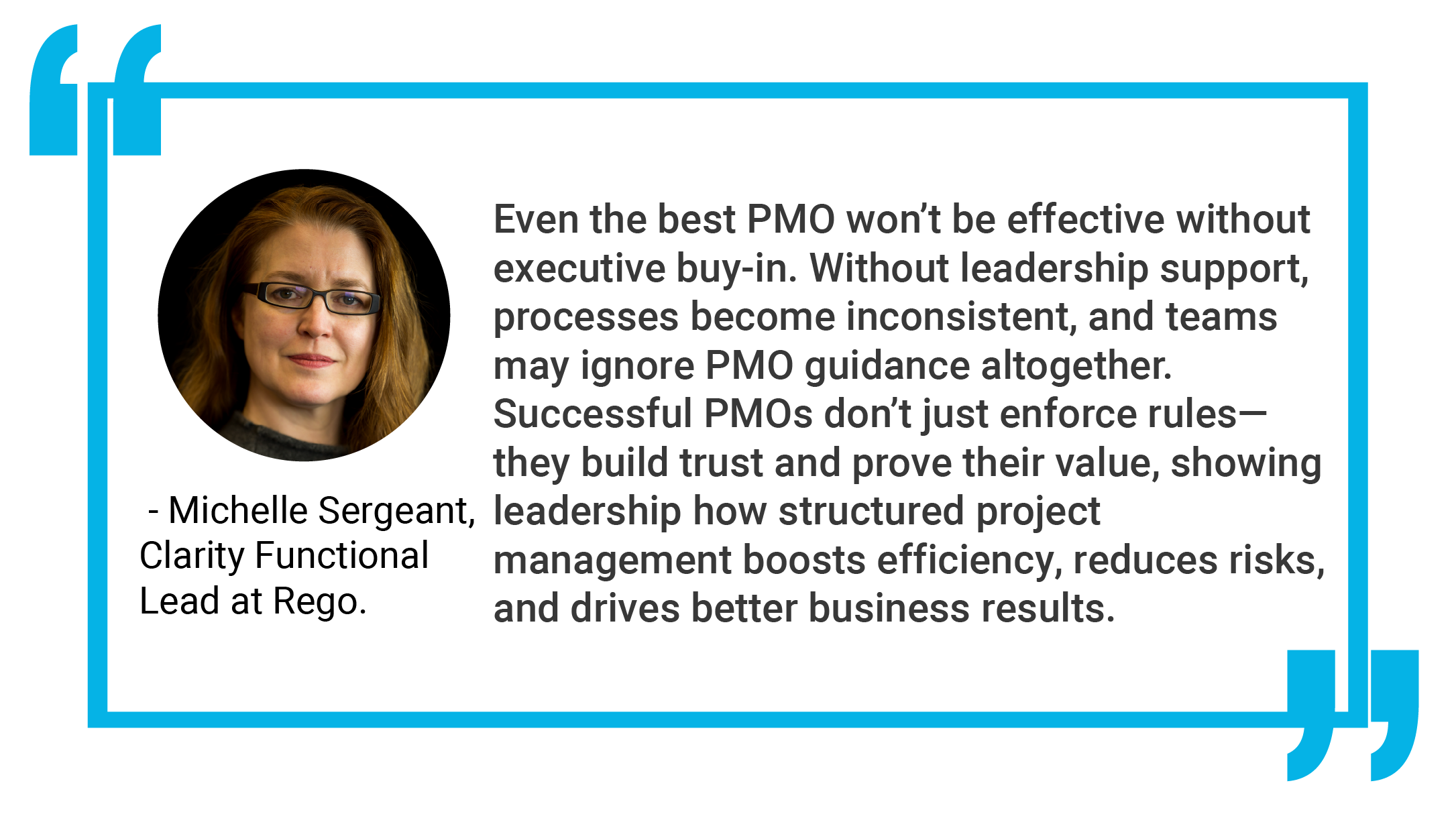by Clarity by Rego
Share
- What is a PMO?
- What is a PMO?
- Understanding the Role of a PMO in Project Management
- Key Responsibilities of a Project Management Office
- Different Types of Project Management Offices
- Characteristics That Define an Effective Project Management Office (PMO)
- Common Challenges Faced by Project Management Offices (PMOs)
- Best Practices for Establishing a Successful Project Management Office (PMO)
- Conclusion
- Get Notified of Updates.

What is a PMO?
Introduction

Running multiple projects at once can get messy—deadlines shift, priorities compete, and resources get stretched thin. That’s where a Project Management Office (PMO) comes in. Think of it as the ultimate project quarterback, making sure everything stays organized, teams stay on the same page, and projects get done on time and on budget. It’s not just rules and processes — it’s about creating a system that helps businesses work smarter, not harder.
But what exactly does a PMO do? From standardizing processes and best practices to resource allocation and risk management, a PMO plays a critical role in driving project success. It acts as a central hub, ensuring that projects align with business objectives while optimizing performance and collaboration across teams.
In this article, we’ll explore:
Whether you’re considering implementing a PMO or looking to refine your existing project management strategies, this guide will provide the insights you need to understand the true value of a PMO in today’s business landscape. Let’s dive in!
Understanding the Role of a PMO in Project Management
A PMO brings structure and consistency to project management, ensuring teams follow best practices, stay aligned with business goals, and work efficiently. It sets the standards for how projects are planned, executed, and tracked, reducing confusion and improving overall performance.
PMOs have come a long way. They started as rigid oversight bodies but have evolved into flexible, strategic enablers that help organizations stay agile while maintaining control. Today, a well-run PMO is essential for optimizing resources, managing risks, and making sure projects deliver real value—not just meet deadlines.
Key Responsibilities of a Project Management Office

A PMO keeps projects organized, on track, and aligned with company goals. It provides the structure and support teams need to work efficiently; setting best practices, managing resources, and making sure projects have the right people, tools, and budget to succeed. It also acts to standardize the processes and mechanisms around the sign off and storage of documentation, making it easier to track progress, stay accountable, and keep everyone on the same page.
But a great PMO goes beyond oversight—it invests in people. By providing training, development, and the right project tracking tools, it helps teams work smarter, not harder. It also standardizes processes, so projects aren’t reinventing the wheel every time, reducing confusion and improving efficiency across the board.
Every organization works differently, which is why PMOs need to be flexible. Some teams rely on waterfall methods with clear step-by-step phases, while others use agile approaches that prioritize adaptability. More and more, companies are blending both into a hybrid model that allows for structure and speed. No matter the approach, a strong PMO ensures that teams stay focused, projects run smoothly, and companies get real results.
1. Guidance and Support
A PMO plays a key role in guiding and supporting project teams, making sure they adhere to best practice through the use of templates and methodologies which allow them to work efficiently and avoid unnecessary risks. With a clear framework in place, teams can navigate complex projects with confidence, ensuring consistency and alignment with company goals.
Rather than starting from scratch every time, PMOs provide:
But a great PMO doesn’t just set the rules and walk away — it’s always looking for ways to improve. By tracking performance, gathering feedback, and refining strategies, it helps teams work smarter over time. Through ongoing training and support, a PMO keeps teams ahead of industry trends, ready to adapt, optimize, and deliver real results. Instead of just managing projects as they come, it shifts organizations from reactive to proactive, turning project management into a true driver of success.
2. Resource Management
PMO makes sure that resources—whether it’s people, time, or budget—are used wisely to keep projects on track. With multiple projects happening at once, it prioritizes where resources should go based on business goals, deadlines, and team capacity; preventing burnout and bottlenecks. It also plays a key role in managing project scopes and budgets, using forecasting tools and tracking systems to keep everything running smoothly while avoiding unnecessary spending.
But it’s not just about numbers—the PMO also ensures that the right roles are clearly defined within project management software, keeping things organized without adding unnecessary complexity. By balancing resources, refining project scopes, and keeping budgets in check, a PMO helps teams stay focused, efficient, and set up for success without the usual chaos.
3. Centralized Documentation
This keeps projects organized by ensuring that every step is clearly documented and easy to access. From initial planning to results, having well-structured documentation means teams always have the information they need—even as people and priorities shift over time.
To stay on track, PMOs use project tracking tools that monitor performance, progress, and potential roadblocks in real time. These tools help teams manage timelines, budgets, and deliverables while also capturing valuable insights to improve future projects. With the right documentation and tracking systems in place, a PMO creates a strong foundation for efficiency, accountability, and long-term success—ensuring that nothing falls through the cracks.
4. Training and Development Initiatives by PMOs
A project isn’t just about structure—it’s about helping teams succeed. One of the best ways it does this is through training and development, giving project managers and resource managers the skills and confidence they need to handle challenges and lead effectively.
PMO-led training programs go beyond the basics, covering everything from fundamental project management principles to advanced methodologies like Agile and Waterfall as well as resource capacity planning and workload monitoring . But it’s not just theory—these sessions provide practical tools and strategies for managing risks, resources, and deadlines in real-world projects. By continuously investing in learning and growth, a PMO helps teams improve, adapt, and deliver better results every time.
5. Governance Framework Established by a PMO
Clear rules, standards, and approval processes keep projects running smoothly and on track. A PMO helps connect the dots between company policies, industry regulations, and quality standards, making sure teams follow the right steps from start to finish.
To prevent confusion and misalignment, PMOs set up governance frameworks that outline methodologies and compliance requirements, giving teams a clear roadmap for managing complex projects. They also use software tools to streamline approvals, track progress, and ensure consistency across teams. With the right balance of structure and flexibility, projects stay aligned with business goals while keeping communication smooth and efficient.
Different Types of Project Management Offices
 Not all PMOs work the same way—some are hands-on, while others take a more advisory role. There are three main types, each with a different level of involvement: supportive, controlling, and directive.
Not all PMOs work the same way—some are hands-on, while others take a more advisory role. There are three main types, each with a different level of involvement: supportive, controlling, and directive.
A supportive PMO is like a helpful guide, offering templates, best practices, and training without enforcing strict rules. A controlling PMO takes a more structured approach, making sure teams follow specific guidelines and compliance standards while still allowing some flexibility. A directive PMO has the most authority, directly managing projects and making key decisions to keep everything on track.
The right approach depends on what the organization needs. Whether acting as a mentor, enforcer, or project lead, a PMO helps bring order, efficiency, and alignment to every project it touches.
Characteristics That Define an Effective Project Management Office (PMO)
Strong communication skills are at the heart of every great PMO. Whether it’s getting executives on board, keeping cross-functional teams aligned, or making sure project updates are clear and actionable, good communication keeps everything moving forward. Just as important is a collaborative mindset. PMOs need to work across departments, balancing structure with flexibility to support different teams while keeping best practices in place.

At the end of the day, a PMO isn’t just about governance—it’s a strategic partner that removes roadblocks, keeps teams aligned, and ensures projects get delivered smoothly and successfully.
Running a Project Management Office (PMO) isn’t without its challenges. While a well-run PMO brings clarity, structure, and efficiency, getting everyone on board isn’t always easy. One of the biggest roadblocks? Resistance to change. Teams and executives sometimes see new processes as red tape rather than tools for success. Overcoming this means communicating the value clearly, proving how the PMO helps projects run smoother, and getting executive buy-in to drive adoption.
Another major challenge is balancing project managers and resource managers. Project managers focus on what needs to get done, while resource managers handle who’s available to do it. Without proper alignment, teams can end up overbooked, underutilized, or working on conflicting priorities. A strong PMO acts as the bridge, ensuring priorities are set first before assigning resources to maximize efficiency.
Then there’s performance tracking—without clear KPIs, reporting tools, and monitoring systems, it’s hard to measure success or improve processes. A PMO needs to set up strong tracking methods from the start to keep projects on course and make informed decisions.
The key to overcoming these challenges? Flexibility, communication, and continuous improvement. A great PMO doesn’t just enforce rules—it adapts, aligns teams, and keeps projects moving forward with real impact.
Common Challenges Faced by Project Management Offices (PMOs)

Running a Project Management Office (PMO) isn’t without its challenges. While a well-run PMO brings clarity, structure, and efficiency, getting everyone on board isn’t always easy. One of the biggest roadblocks? Resistance to change. Teams and executives sometimes see new processes as red tape rather than tools for success. Overcoming this means communicating the value clearly, proving how the PMO helps projects run smoother, and getting executive buy-in to drive adoption.
Another major challenge is balancing project managers and resource managers. Project managers focus on what needs to get done, while resource managers handle who’s available to do it. Without proper alignment, teams can end up overbooked, underutilized, or working on conflicting priorities. A strong PMO acts as the bridge, ensuring priorities are set first before assigning resources to maximize efficiency.
Then there’s performance tracking—without clear KPIs, reporting tools, and monitoring systems, it’s hard to measure success or improve processes. A PMO needs to set up strong tracking methods from the start to keep projects on course and make informed decisions.
The key to overcoming these challenges? Flexibility, communication, and continuous improvement. A great PMO doesn’t just enforce rules—it adapts, aligns teams, and keeps projects moving forward with real impact.
Best Practices for Establishing a Successful Project Management Office (PMO)

Setting up a PMO is all about creating a system that truly supports teams and drives project success. To make sure a PMO delivers real value from the start, organizations need to focus on a few key best practices.
First, stakeholder engagement is critical. A PMO won’t succeed if leadership and teams don’t see its value. Getting early buy-in from executives, project managers, and resource teams helps prevent roadblocks and ensures smoother adoption. Communicating how the PMO will improve efficiency, reduce risks, and align projects with business goals is key to turning skeptics into supporters.
Next, choosing the right project software makes all the difference. Whether it’s for resource management, performance tracking, or collaboration, the right tools eliminate bottlenecks and streamline workflows. A PMO should look for software that is easy to use, integrates well with existing systems, and can scale as the organization grows.
Finally, flexibility is everything. A PMO should start with clear but adaptable frameworks—too much rigidity can slow teams down instead of helping them. By gathering feedback, refining processes, and focusing on continuous improvement, a PMO can evolve to meet an organization’s changing needs.
Conclusion
A well-run PMO is the backbone of successful projects, ensuring alignment, efficiency, and strategic impact. With the right processes, tools, and collaboration, a PMO turns project chaos into clear, structured success.
More than just governance and oversight, a PMO is a strategic partner that balances structure with flexibility—helping teams stay on track without unnecessary red tape. Tools like Clarity provide real-time insights, resource planning, and performance tracking, making it easier for organizations to make data-driven decisions and maximize project value.
A PMO isn’t just about processes—it’s about setting teams up for success. With strong leadership, smart strategies, and the right tools, it turns project management into a driving force for efficiency, innovation, and long-term growth.

STAY IN THE LOOP
Get Notified of Updates.
Stay ahead of the curve by subscribing to our newsletter. Get the latest insights, strategies, and tools delivered straight to your inbox, and empower your business to achieve more.

